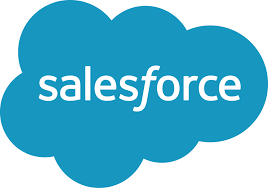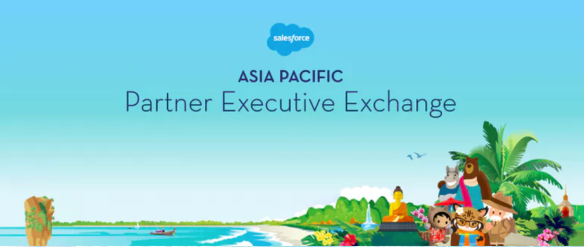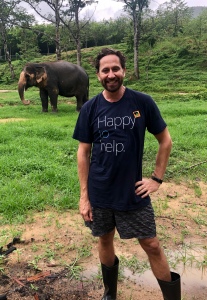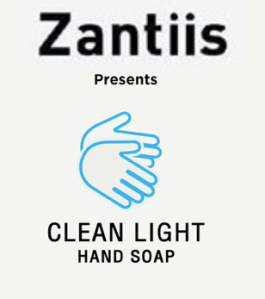 This week I was in Thailand for the Salesforce APAC Partners Conference at the beautiful Renaissance Phuket Resort and Spa.
This week I was in Thailand for the Salesforce APAC Partners Conference at the beautiful Renaissance Phuket Resort and Spa.
Salesforce hosted their top fifty partners from across the region to join the Salesforce APAC Leadership team and APAC Alliances Leadership Team for an exclusive opportunity to network, interact and exchange business, whilst celebrating the success from FY19.
Salesforce cloud-based customer relationship management (CRM) platform is a key partner to WPP and software platform for supercharging our client’s omnichannel customer first strategies across marketing, sales, commerce, and service.
Salesforce has seen continuous growth over the years and over the last eight quarters in particular. The growth has been above 25% every quarter in FY 2018 as compared to the same quarter in FY 2017. In Q1 2019 (ended April 2019) the revenue grew by 24.3% y-o-y.
If you invested in Salesforce shares ten years ago in Salesforce, that decision would have paid off. A $1,000US investment made in May 2009, would be worth nearly $15,000 today for a total return of around 1,400%. Which over the same period, the S&P 500 has returned just over 250%.

Salesforce reported $13.3 billion in Total Revenues in FY 2018 from three revenue streams. the majority of the revenue comes from Cloud Based CRM Software which accounts for $9.6 billion in FY 2018 (72% of Total Revenues). This includes revenues generated from subscription and support of the Salesforce platform.
Then there is Cloud Software at $2.8 billion in FY 2018 (21.5% of Total Revenues). This includes revenues generated from subscription and support of Sales Cloud, Service Cloud, and Marketing & Commerce Cloud and finally Consulting and Services and $0.9 billion in FY 2018 (6.5% of Total Revenues). This includes revenues generated from any professional services provided by the company.

Enjoying dinner with my colleague Damien Brown
Executive Director, Partnerships APAC AKQA
Salesforce going forward will come from how companies use data integration across its multiple software suites to better understand and serve their customers. Using its Einstein artificial intelligence software, along with data integration technology from its 2018 acquisition of MuleSoft, Salesforce is promoting a strategy it calls Customer 360. Under this, Salesforce and its customers are developing applications to integrate and use customer data across sales, service, marketing and customer-engagement systems to be more responsive to customer needs.
While I enjoyed hearing about all the new innovations and cloud product development from the company what I enjoyed most is the strong focus Salesforce has on culture and values to drive digital transformation both internally and with customers.

They have this thing called the Ohana spirit. Drawing inspiration from the traditional Hawaiian philosophy of what it means to be “family,” and how families are bound together and responsible for one another. While the brand expression of this is a little cheesy I do find it very distinctive.
The Salesforce’s Ohana extends beyond their employees to partners, customers, and members of the communities. With Ohana ingrained into the Salesforce DNA, they collaborate, take care of one another, have fun together, and work to leave the world a better place.
The company has several prestigious “Best Workplace” lists the last couple of years including #3 in Best Workplaces in Technology 2019 and 2018, #2 in 2019 Fortune 100 Best Companies to Work For, #1 in 2018 Fortune 100 Best Companies to Work For, #1 in Best Workplaces for Giving Back 2018, #2 in Best Workplaces for Millennials 2018,#9 in Best Workplaces for Women 2018, #19 in Best Workplaces for Diversity 2018 and #15 in Best Workplaces for Parents 2018.
The CEO, Marc Benioff, is a champion for gender pay equality. Under his progressive leadership, he’s been able to fix pay discrepancies by dedicating over $8 million to correct compensation differences by gender, race, and ethnicity across the company.
While those awards should be proof enough of how employees feel about Salesforce, there are certain distinguishing features that make their culture a good platform for digital transformation. Salesforce has committed to the philosophy of treating its employees fairly and puts a lot of effort into making sure all employees are valued and rewarded.
It becomes very clear when spending time with the Salesforce employees they have a personal responsibility to live out and uphold the company values of Trust, Customer Success, Innovation, Giving Back, Equality, Wellness, Transparency, and Fun.
The 1-1-1 philanthropic model is also very powerful. A hot button for younger working generations is being able to serve their local communities. And since philanthropy and community service have become a vital part of the Salesforce culture, it has allowed the firm to engage its predominant Millennial and Generation Z employees to improve communities throughout the world.
They call their integrated philanthropic approach the “1-1-1” model. Salesforce donates 1 percent of its software, 1 percent of its equity, and 1 percent of its employees’ time to pay it forward. As a result, Salesforce has topped a list of workplaces that give back.

Since their founding, this unique social responsibility model has given “more than $240 million in grants, 3.5 million hours of community service, and provided product donations for more than 39,000 nonprofits and educational institutions.
During this Salesforce conference, the partners spent a day with the Salesforce leaders at the Phuket Elephant Sanctuary a final home for retired working elephants, set on 30 acres of the lush tropical jungle. We got to observe how elephants rehabilitate into forest life after decades of abuse and experience how incredible the largest land mammal on earth is during a day out of feeding, bathing, and farming.
Lastly, I was also privileged to hear a talk from Dr. Craig Challen and Dr. Richard Harris. An incredible story of leadership and team collaboration working in the unknown. These two have become household names in Australia thought national and international media after his heroic involvement in the Thai Cave rescue in 2018.
This previous cave diving experience combined with his expert medical knowledge, saw these two advise, overlook and navigate the treacherous and dangerous conditions to save the lives of twelve young soccer players and their coach. In 2019, Richard ‘Harry’ Harris, alongside Dr Craig Challen SC OAM, was named as the first dual Australians of the Year.
Thank you Charles Woodall Vice President, Head of Channels, Alliances, and Partners for Salesforce APAC for putting on such a wonderful event.


